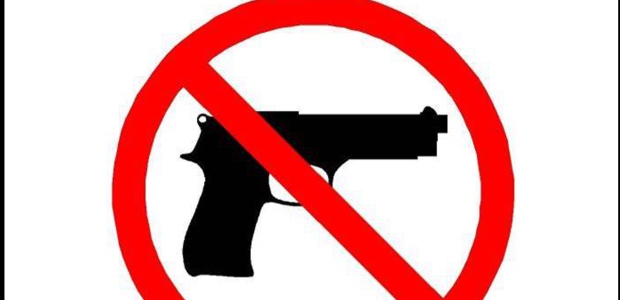
Illinois Concealed Carry Law Mandates a Safety Sign
The sign indicating that carrying firearms is prohibited must be displayed at the entrance of “statutorily prohibited areas,” including schools, hospitals, and sports stadiums.
- By Jerry Laws
- Dec 01, 2013
The Illinois State Police unveiled on Oct. 11 the proposed design for one of the newest safety signs that will be displayed in some Illinois workplaces as a result of the Firearm Concealed Carry Act, a state law that took effect July 9, 2013. The law, Public Act 98-63, requires an Illinois Concealed Carry License for someone--current peace officers and retired police officers eligible under a federally approved retired officer concealed carry program are exempt--to carry a concealed firearm in Illinois, according to the agency.
"Owners of any statutorily prohibited area or private property, excluding residences, where the owner prohibits the carrying of firearms must clearly and conspicuously post the Illinois State Police-approved sign at the entrance of the building, premises or real property," according to this provision highlighted by the state police: HB183, Section 65 (Prohibited Areas) (d) Signs stating that the carrying of firearms is prohibited shall be clearly and conspicuously posted at the entrance of a building, premises, or real property specified in this Section as a prohibited area, unless the building or premises is a private residence. Signs shall be of a uniform design as established by the Department and shall be 4 inches by 6 inches in size.
The state police will make concealed carry online applications available to the public by Jan. 5, 2014, and its announcement said information about the application and fingerprinting process also will be posted.
Schools, hospitals, mental institutions, most buildings of the state's executive or legislative branch agencies, public parks, sports stadiums, and museums are among the "statutorily prohibited" facilities that must post the sign.
The new law requires applicants to complete 16 hours of firearms training, including classroom and range instruction. There is no reciprocity in place for someone who holds an out-of-state concealed carry permit; he or she must obtain an Illinois Concealed Carry License to lawfully carry a concealed firearm in Illinois. However, out-of-state residents now have a limited exception to lawfully carry a concealed firearm inside a vehicle if they are eligible to carry a firearm in public under the laws of their state or territory of residence and aren't prohibited from owning or possessing a firearm under federal law. This rule became effective immediately, according to the state police.
The proposed rules from the state police would require a white background, no text (except for a reference to the Illinois Code 430 ILCS 66/1) or marking within the 1-inch area surrounding the graphic design, an image of a handgun in black ink with a red circle around it and a diagonal slash across the firearm, and that the image be 4 inches in diameter. While it specifies a sign measuring 4 by 6 inches, the proposed administrative rules allow property owners to post a larger sign, with additional language, if the owner believes the entrance of the building, premises or real property requires it.
To download a template of the approved sign for use, visit www.isp.state.il.us/firearms/ccw.
This article originally appeared in the December 2013 issue of Occupational Health & Safety.
About the Author
Jerry Laws is Editor of Occupational Health & Safety magazine, which is owned by 1105 Media Inc.